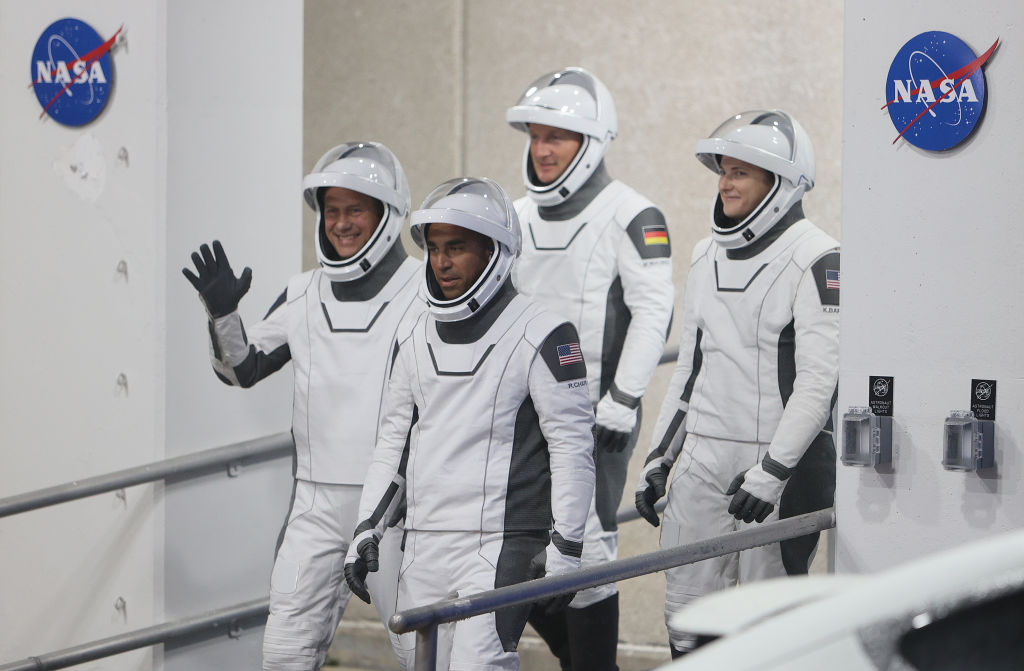NASA altered a space tourism mission's scheduled launch date from the end of February to the end of March, with the three amateur astronauts eager to visit the International Space Station (ISS) having to wait a little longer than expected.
The private mission team is now targeting March 31 due to additional spacecraft preparations and space station traffic, suggesting other spacecraft will be on maneuvers around the ISS toward the end of February and beginning of March, according to Texas-based Axiom Space, the organizer of what will be NASA's first space tourism trip to the ISS.
Ax-1, the first ever private astronaut mission to the @Space_Station, is now targeting a March 31 launch due to additional spacecraft preparations & space station traffic. The multinational crew will conduct science, outreach, & commercial activities during their 8 days on ISS. pic.twitter.com/s9qsnS7gE8
— Axiom Space (@Axiom_Space) January 20, 2022
Space Tourism Mission
American entrepreneur Larry Connor, former Israeli Air Force pilot Eytan Stibbe, and Canadian investor and philanthropist Mark Pathy will be aboard the private astronaut mission called the Ax-1 space tourism mission.
As reported by Digital Trends, this private space mission is stated to last for about a week on the International Space Station.
Furthermore, flying as the mission commander would be NASA's former astronaut Michael López-Alegría, completing the crew for the Ax-1 space tourism mission.
The crew will be launched into space by a SpaceX Falcon 9 rocket, with the four crew members being transported to and from the ISS by the Crew Dragon spacecraft.
The mission is part of NASA's and Roscosmos' collaborative effort and initiative to market the ISS in order to raise finances while at the same time boosting access to space.
The target market for these space tourism expeditions is directed towards the extremely wealthy.
As a matter of fact, Russia's Roscosmos has been operating space tourism missions on and off for years now.
This private mission marks a first for NASA's first experience of overseeing a space tourism mission.
Its most recent space tourism mission was in December when it utilized a Soyuz spacecraft to transport two Japanese space tourists to the ISS, where they spent 12 days in space before returning to Earth.
Cost Per Trip
The Ax-1 space mission astronauts are reported to be working on studying philanthropic projects that will most likely include different types of health-related activities.
Stibbe, Connor, and Pathy paid a hefty price of $55 million each in their flight to space.
Tom Cruise on Space Aboard SEE-1 Module
Meanwhile, a module was commissioned by Space Entertainment Enterprise, a U.K.-based studio co-founded by creators Elena and Dmitry Lesnevsky.
SEE-1 would be the world's first multimedia and entertainment studios and multipurpose arena in space, according to NASA.
According to the reports of CNBC, the producers of Tom Cruise's upcoming space film unveiled plans to attach a studio to the International Space Station, which is now being built by Houston-based company Axiom.
The launch of SEE-1 is planned for December 2024.
It will connect to Axiom's first module, which will be connected to the company's space station in September 2024.
An additional fundraising round is anticipated shortly.
The company is currently in conversations with investors and commercial partners on the concept, Space Entertainment Enterprise said in a press release.
ISS Inflatable
According to Axiom, the SEE-1 module will be an inflatable module with a diameter of over 20 feet.
Due to the advantage of launching in a smaller form factor and then expanding to a larger volume once in space, commercial businesses designing space stations are increasingly turning to inflatable modules to build vast living areas.
As an example, in 2016, Bigelow Aerospace, a now-defunct space business, linked its inflatable BEAM module to the International Space Station, which NASA continues to utilize for cargo storage in the research laboratory.
Related Article: NASA Rover's Search for Life on Mars Allegedly Lead to Discovery of Frog-Like Rocks on Red Planet?














